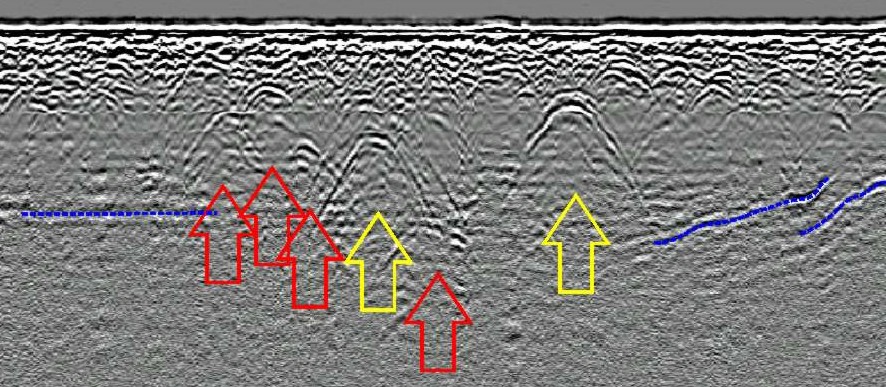A reflection of day 2 of 7 of our field course, in which we learned about the theory behind ground penetrating radar and made our first visit of many to the cemetery.
Guest post by Cooper
GPR with Dr. Whiting
Yesterday was only the second day of our heritage & historical archaeology field course, and it feels like time is flying by. I can’t believe we’re pretty much a third of the way through already! The bulk of our day was spent learning about how ground penetrating radar (GPR) works from Dr. Brian Whiting of Geoscan BC. I was really excited about this because I first heard about GPR in another anthropology class a couple of years ago, and it immediately grabbed my attention. GPR combines my love for anthropology with my nerdier interests in math and computer science. It’s a way for me to be involved in archaeology without having to spend all day in the dirt dealing with bugs, sunburns, and back pain.
Key Takeaways from Dr. Whiting’s Presentation
- At a basic level, GPR works by sending energy pulses into the ground and measuring how long it takes for the energy to bounce back up to the receiver after the pulses reflect off of any underground features (such as a change in ground type, a large object, etc.), allowing us to determine how deep in the ground these features are.
- Contrary to popular belief, GPR is not great at finding bones. In the “eyes’ of GPR, human bones look similar to common earth materials and are usually too small to be “seen” by GPR.
Exploring the Cemetery
Later in the day, we had our first visit to the cemetery. It was smaller than I expected but really beautiful. The grounds manage to maintain a certain sense of tranquility even with its proximity to busy streets.
To get familiar with the layout, we did an activity in small groups where we had to find certain burial plots using a map of the cemetery and record different features of the grave markers on each plot. Seeing just how unique each grave marker can be at this cemetery (in comparison to a more corporate cemetery) makes me excited to learn more about the history of the individuals that are buried here.

There is a wide variety of grave markers in the
cemetery. Note the variations in size, shape, and material. Taken by Melanie Heizer (2013).
Engaging with the Cemetery
If I’m this intrigued by the stories contained in this cemetery just from looking at a handful of grave markers, then I can only imagine how eager the local Jewish community is to learn more about the people buried here. This serves as a great reminder of the fact that we are not just here to further our education but are here in collaboration with the cemetery committee. One of the outlined goals of our agreement with the committee is to provide them with more detailed mapping of the cemetery using GPR, including the depth of the bedrock and any possible unmarked graves. While we were exploring, I noticed that there wasn’t much space left for new burials, so it makes sense why the cemetery committee is so eager to find any unmarked burials,
as once they know which areas they are unable to dig, they’ll be able to make a concrete plan for the future layout of the cemetery.
Looking Ahead
I’m really excited to continue with the course, especially when we start actually using GPR and learn how to process the data that we gather. It’s going to be a hands-on experience that will take our learning to the next level.
The second day of our course was great introduction to what we’ll be doing for our remaining 5 days. We learned all about ground penetrating radar from Dr. Whiting, and I’m grateful for the knowledge he shared. Then, we got to visit the cemetery and explore its grounds. It was a peaceful place, but also made me realize the deep, individual histories contained within these grounds and reiterated the importance of following through on our promises to the cemetery committee. I’m excited for what’s to come in the course. The journey ahead is full of possibilities, and I can’t wait to see what we discover together.
